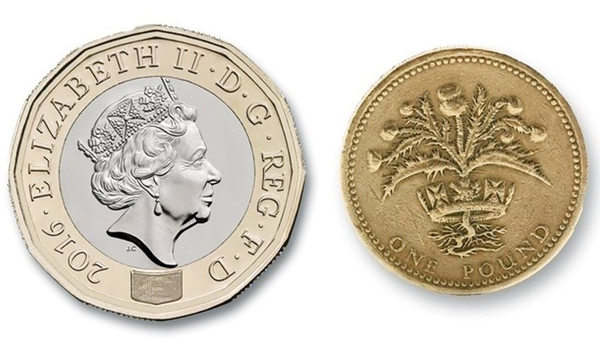Fake notes
As the new £1 coin, with numerous world-leading security features, goes into circulation, Police Professional looks at some of the recent developments and statistics in criminals attempts to deceive retailers into accepting counterfeit currency.
When officers from Staffordshire Police searched the vehicle of a man acting suspiciously in a car park in Stoke-on-Trent, they expected to find drugs. Instead, in the boot of Danny McCoys car they discovered seven high-quality, counterfeit £20 notes. A search of his home uncovered a further £2,100 in counterfeit £20 notes, together with £20,000 in real cash. Bailed pending further investigations, McCoy was stopped again five months later, this time by officers from Cambridgeshire Constabulary who discovered around £8,000 in counterfeit £20 notes. Last summer, McCoy was jailed for three and a half years after pleading guilty to two offences of having custody or control of counterfeit currency with intent, and one of possession of criminal property. In 2016, around 347,000 Bank of England counterfeit banknotes were taken out of circulation with a face value of £7.5 million 297,000 were forged £20 notes, 26,000 forged £50 notes, 22,000 forged £10 notes and 2,000 forged £5 notes. Although this represents just a fraction of the genuine banknotes in circulation some 3.5 billion with a face value in excess of £71 billion the true figure could be much higher as a significant amount of counterfeit currency is used to pay for illegal goods. Forged notes are routinely found during raids on drug gangs, so their use is rarely reported. Last September, the Bank of England issued a new £5 note its first banknote printed on polymer, a type of plastic, rather than paper. It says polymer banknotes are cleaner, more secure and more durable than paper notes. A new polymer £10 note is expected to be issued in September 2017, but a new £20 note will not go into circulation until at least 2020. Last month, Dorset Police was forced to issue an apology after one of its police community support officers (PCSO) claimed that forged versions of the new £5 note had been spotted in the county, causing alarm among Bank of England officials who said the polymer notes would be virtually impossible to counterfeit. The alert quickly spread to other police forces, but an investigation confirmed it was a false alarm and no such notes had been encountered. High-quality counterfeit paper banknotes can be produced quickly by skilled printers using traditional offset lithographic methods. However, organised crime groups are also producing digitally-printed fakes, using the latest technology and laser or inkjet printing techniques. Crime groups involved in counterfeit currency are increasingly operating in linked networks. While most groups produce their own unique forged banknotes, some will finish add the foil security features or distribute counterfeit notes from other groups. Circulating forged cash is regarded as high risk, so large amounts are usually broken down into smaller batches for distribution, mostly by street-level criminals. A recent wave of extremely high-quality forgeries of £10, £20 and £50 banknotes circulating in the UK are believed to be the work of the Naples-based Camorra crime syndicate. The notes include all the correct security features, including holograms and watermarks, and are able to pass security checks with ultraviolet light, so even experienced cashiers struggle to spot them. It marks a shift in operations by the Mafia, which has historically specialised in counterfeit euros, using sophisticated equipment and a skilled workforce in Naples and Calabria. In January, police in Naples seized five printing presses used to produce fake banknotes, plus unfinished fake 50 euro bills with a value of 50 million euro. Distribution is usually through anonymous darknet markets. Evidence shows some forged notes are bought by British fraudsters and then sold on via internet sites. One typical seller is offering £10 and £20 notes with a value of £1,000 for just £100; £4,000 worth is offered for £200. The advertisement claims the notes work in bookies, roulettes, self-service checkouts and train ticket machines. While only the Bank of England can legally issue pape


